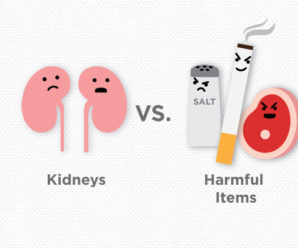
In the medical world, the saying “time heals all wounds” should be changed to “time heals some wounds.” Chronic or long-lasting wounds need intervention, along with time, to heal properly.
Likely candidates for chronic wounds
Patients with non-healing wounds usually have other underlying conditions, like diabetes, poor arterial or venous blood flow, or problems with sensation.
People who have diabetes are susceptible to chronic wounds because they may have poor blood supply and/or limited sensation at the area of the wound. When these wounds are in the hands or feet, they can lead to amputation if not treated properly.
“We see the whole spectrum of wounds,” said Elizabeth Helmer, M.D., wound healing physician with Marshfield Clinic Health System. “We treat any wound that is persistent beyond six weeks after its beginning.”
Wounds that don’t heal put patients at risk for limb loss, body tissue loss and worsening infections that could lead to death.
A proactive approach to wound treatment
Marshfield Clinic Health System’s approach to chronic wounds is to treat the underlying cause that is making the wound persistent and aggressively close the wound through advanced techniques including surgical closure.
“Once damaged and infected tissue is removed and underlying problems are corrected, chronic wounds still take about 12 weeks to heal with standard wound care,” Dr. Helmer said. “Advanced techniques that employ tissue engineering, growth factors and wound surgery can be used to get them to heal faster.”
One of the challenges of wound healing is that chronic wounds often occur where people put consistent pressure, like their feet or backside. In order to promote healing, that pressure has to be relieved.
“In order to get wounds to heal, we frequently have to modify a patient’s behavior to take pressure off the wound,” Dr. Helmer said. “That can mean not walking or sitting, which takes people away from work and their normal daily activities. That’s why we try to be as proactive as possible to close wounds.”
Hyperbaric oxygen therapy
Hyperbaric oxygen therapy has many beneficial medical applications, including helping with healing of chronic wounds.
In a hyperbaric chamber, a patient breathes pure oxygen, and the atmospheric pressure is increased much higher than normal air pressure. Under these conditions, lungs can gather more oxygen than would be possible breathing pure oxygen at normal atmospheric pressure.
Think of it as packing more oxygen molecules into each breath,” Dr. Helmer said. “Your blood carries this oxygen throughout your body. This helps fight bacteria, stimulates new blood vessel growth and the release of substances called growth factors and stem cells, which promote healing.”
Your body’s tissues need adequate supply of oxygen to function. When tissue is injured, it may require even more oxygen to survive. Hyperbaric oxygen therapy increases the amount of oxygen your blood can carry. An increase in blood oxygen temporarily restores normal tissue metabolism and function to promote healing and fight infection.
Hyperbaric oxygen therapy is used to treat several medical conditions, and your doctor may suggest it if you have one of the following:
- Severe anemia
- Brain abscess
- Bubbles of air in your blood vessels
- Burns
- Decompression sickness (Bends)
- Carbon monoxide poisoning
- Crush injury
- Sudden deafness
- Gangrene
- Severe infection of skin or bone with tissue death
- Chronic non-healing wounds, such as diabetic foot ulcers
- Radiation injury
- Skin graft or skin flap at risk of tissue death
- Sudden and painless vision loss
If you’ve been dealing with a chronic wound or an issue that could be addressed with hyperbaric therapy, talk with your primary care provider.







Leave a Reply